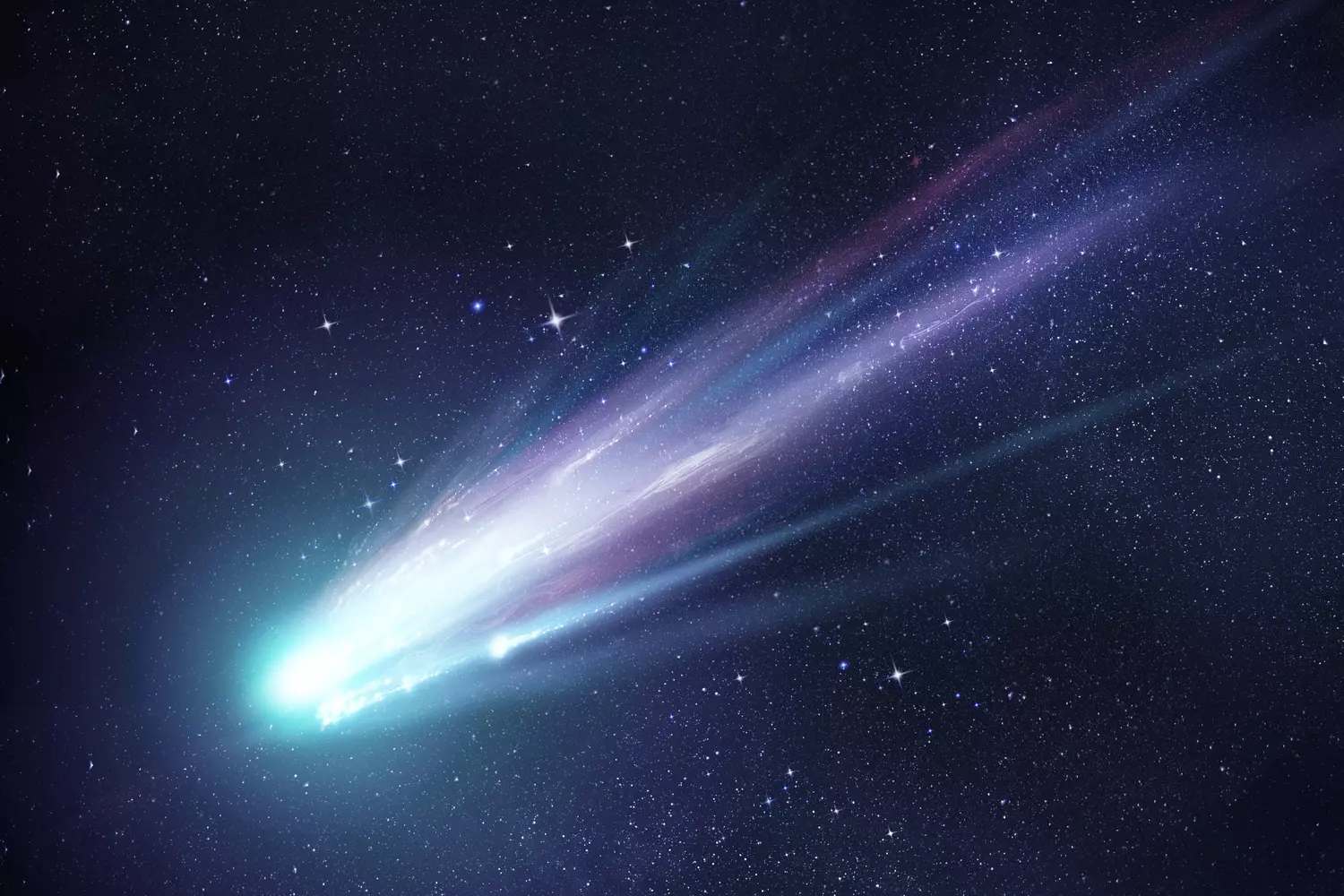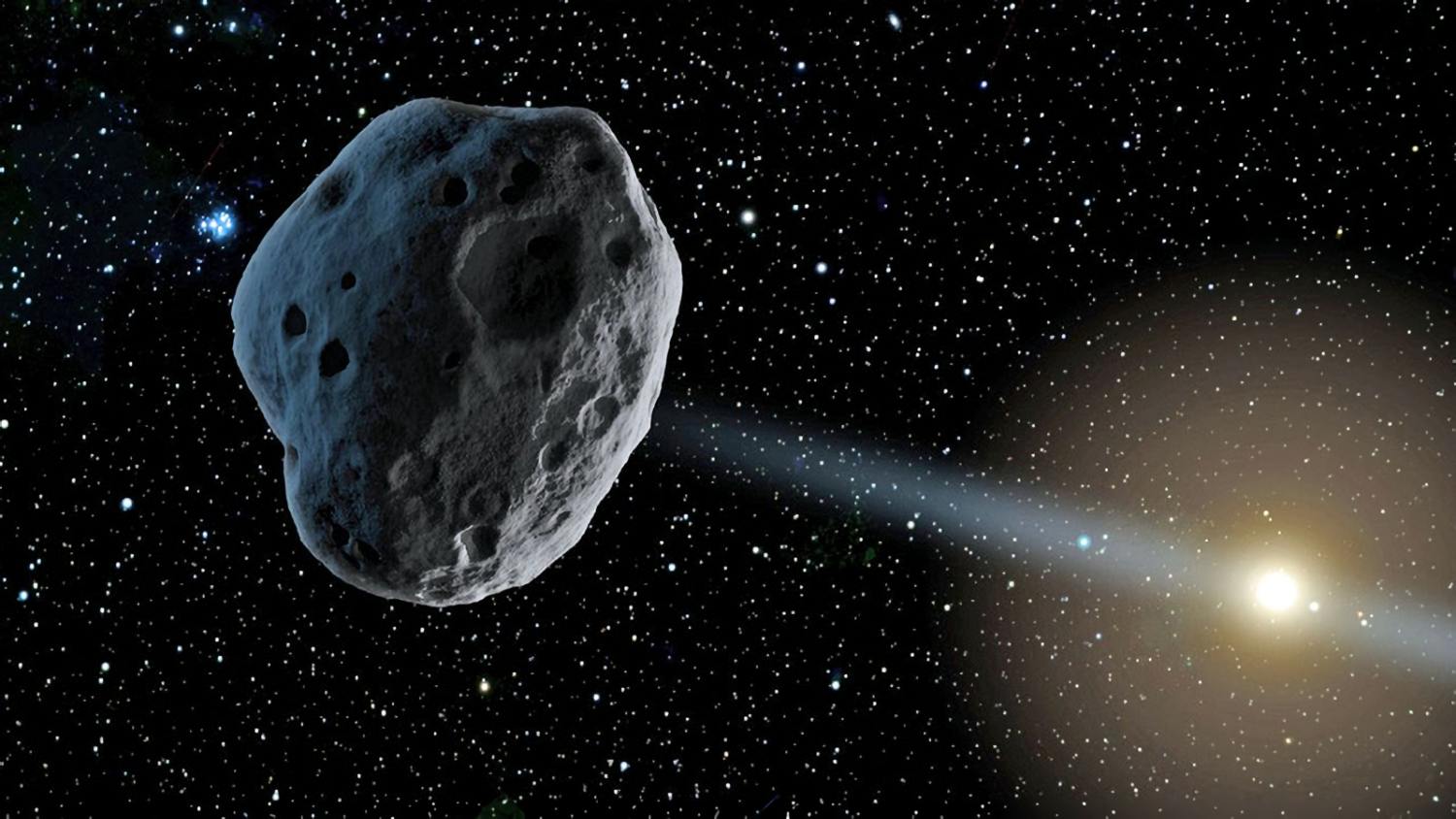When will Halley’s Comet next pass by? What was the spacecraft that arrived on comet 67P, and where is comet Leonard right now? How and where do comets get their distinctive shapes? What is the difference between a comet, an asteroid, or a meteor? Here, we’ll explain the distinctions between them.
- In 2023, what comet might we expect to see?
- What is a comet?
- The composition of a comet
- The biggest known comet
- The difference between a meteorite and a comet
- The difference between a comet and an asteroid
- Where do comets come from?
- Were dinosaurs wiped off by a comet?
- When did Halley’s Comet last appear?
- Where is Comet Leonard?
- When did comet Neowise last pass earth
- How large is comet 67P?
- The best way to see a comet in the night sky
They travel through our sky, leaving behind lengthy clouds of gas that provoke intrigue, curiosity, and even fear of a fall depending on the time, and they have humorous names like C/2021 A1, Halley, and 67P. Let’s explore the history of comets, from Halley’s to the more recent Neowise and Leonard, and even the renowned comet 67P, which was outfitted with the Philae spacecraft. These frozen things have captivated and terrified humans for millennia.
In 2023, what comet might we expect to see?
Predicting a comet’s visibility is difficult since it relies on so many variables, and their passage can only be computed a few months in advance. On May 13, 2023, comet 39P Oterma is expected to approach quite close to Earth, raising the possibility that it may be seen from Earth. Comet 103P Hartley may possibly make a close approach to Earth on October 13, 2023.
What is a comet?

A comet is a heavenly body formed long ago during the formation of the solar system from gases, rocks, and dust that have since frozen solid. These snowballs from space are the real deal. The Sun’s heat causes the comet’s material to melt as it approaches and passes close to the star. After that, the comet starts to eject a massive luminous shape, bigger than most planets, made of dust and gas.
When a comet is in a tight solar orbit, its size may range from a few miles to tens of miles. When its material begins to flow out, it creates a beautiful cloud of gas and dust that follows behind it for millions of miles, making it visible to us on Earth.
The comet develops two tails in its wake: the dust tail and the plasma tail. The first one is made of dust and is proportional to the speed with which the asteroid is moving. Being able to span millions of miles makes it the most impressive. The second is a gaseous structure known as an ionized tail or plasma tail.
These gas molecules are disassembled by the sun’s UV rays, making them emit light. A plasma tail may extend out into space for tens of millions of kilometers. They can reach 100 million miles in length (around 150 million km). Comet Hale-Bopp has been seen with a third sodium tail.
The composition of a comet
Comets emerge from debris left behind from when the Sun and planets were first created. As such, these objects serve as crucial eyewitnesses to the birth of our solar system. Comets are witnesses to those early moments. Because they did not undergo any changes since being frozen in the beginning.
Frozen gases, in the form of ice, boulders, and rock dust, make up a comet’s nucleus. Observations of comet 67P reveal that it is rich in carbon and that several chemical compounds previously unknown everywhere except on Earth have been detected on the comet. Therefore, it is possible that the components that made it possible for life to form on Earth came from space and were carried by heavy bombardment 4 billion years ago. In order to learn more, it would be necessary to analyze the makeup of several additional comets.
The biggest known comet
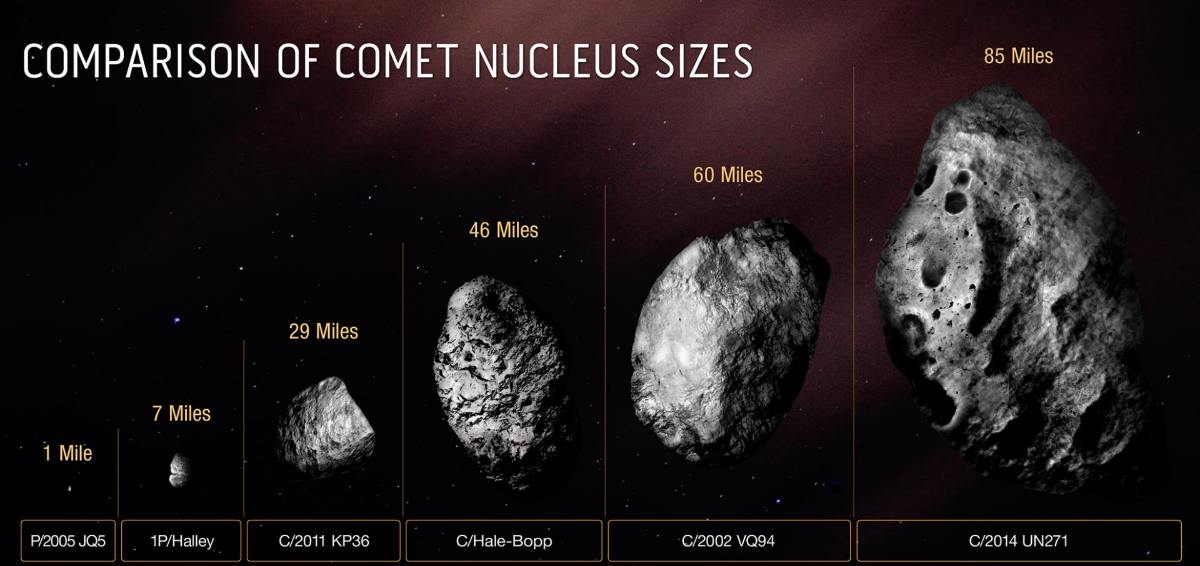
Currently, comet Bernardinelli-Bernstein or “C/2014 UN271” is the biggest comet in the sky. Observers didn’t directly see it until December 2021, and it wasn’t discovered until 2014. They measured its peculiar diameter and found it to be 85 miles, or 137 kilometers. Because of this, it is the biggest known comet, surpassing even comet C/2002 VQ94 (LINEAR). We now know this based on images collected by the Hubble Telescope in January 2022.
The difference between a meteorite and a comet
A comet is a celestial body that orbits the sun or another star. A core of ice and particles makes up its core. Some of its components transform into gas as it nears the Sun, leaving a bright trail behind the nucleus stretching for millions of miles. Meteorites, on the other hand, are pieces of rock and metal that fall to Earth after entering the atmosphere and burning up. Comets and meteorites are not similar in composition or origin.
The difference between a comet and an asteroid
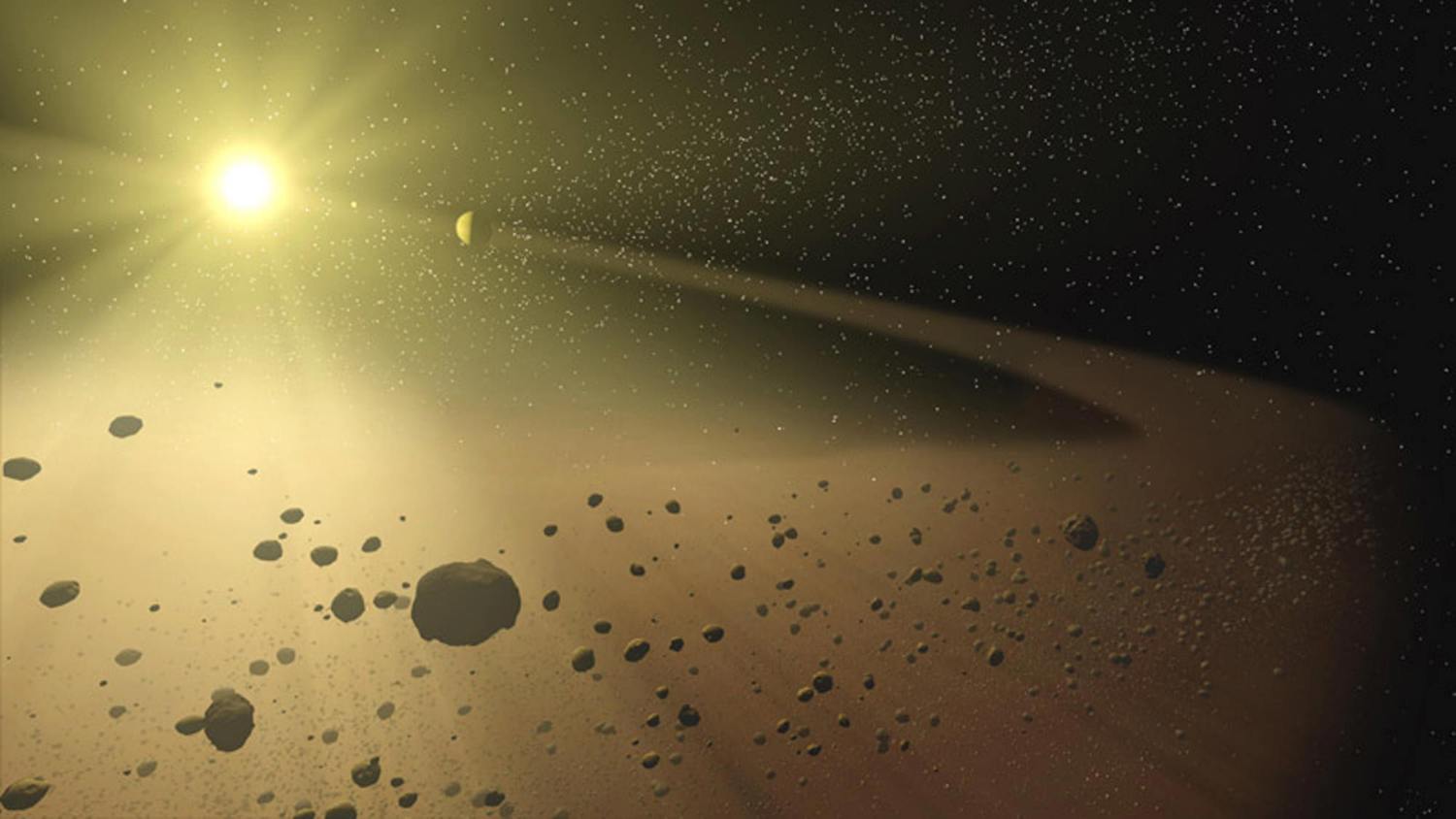
Asteroids, which circle the Sun and may be either rocky or metallic, are one such kind of object. There are two asteroid-rich regions in our solar system, the main asteroid belt, and the Kuiper belt. Both of these regions are now thought to have existed because a planet never formed there. The rocky debris that may have coalesced into a planet during the formation of the other planets is still present in this region. Asteroids are the undeveloped embryos of planets that failed to complete their accretion process.
In contrast, comets are icy entities made of gas trapped in ice and dust from the early solar system’s creation. These objects have been collected from all around the solar system and are now being held in the Oort cloud, a large collection of comets near the solar system’s outskirts. When a comet approaches the Sun, the ice at its core melts and converts to gas, leaving behind a lengthy, distinctive path that can be seen from Earth.
Where do comets come from?
The Oort cloud is where most scientists believe comets originate from. This cloud is a spherical structure that fills the whole solar system with countless frozen particles. As a result, it serves as a genuine comet reservoir. Once in a while, a neighboring planet’s gravitational pull will lead one of these objects to detour from its original path.
The comet’s orbit might shift, bringing it closer to the Sun, where it could be thrown off course. Some comets make a single close approach to the Sun and then continue on their orbits far from the star. While others may be seen from Earth because their orbits are so elliptical that they often pass at a relatively close distance to the Sun.
Were dinosaurs wiped off by a comet?
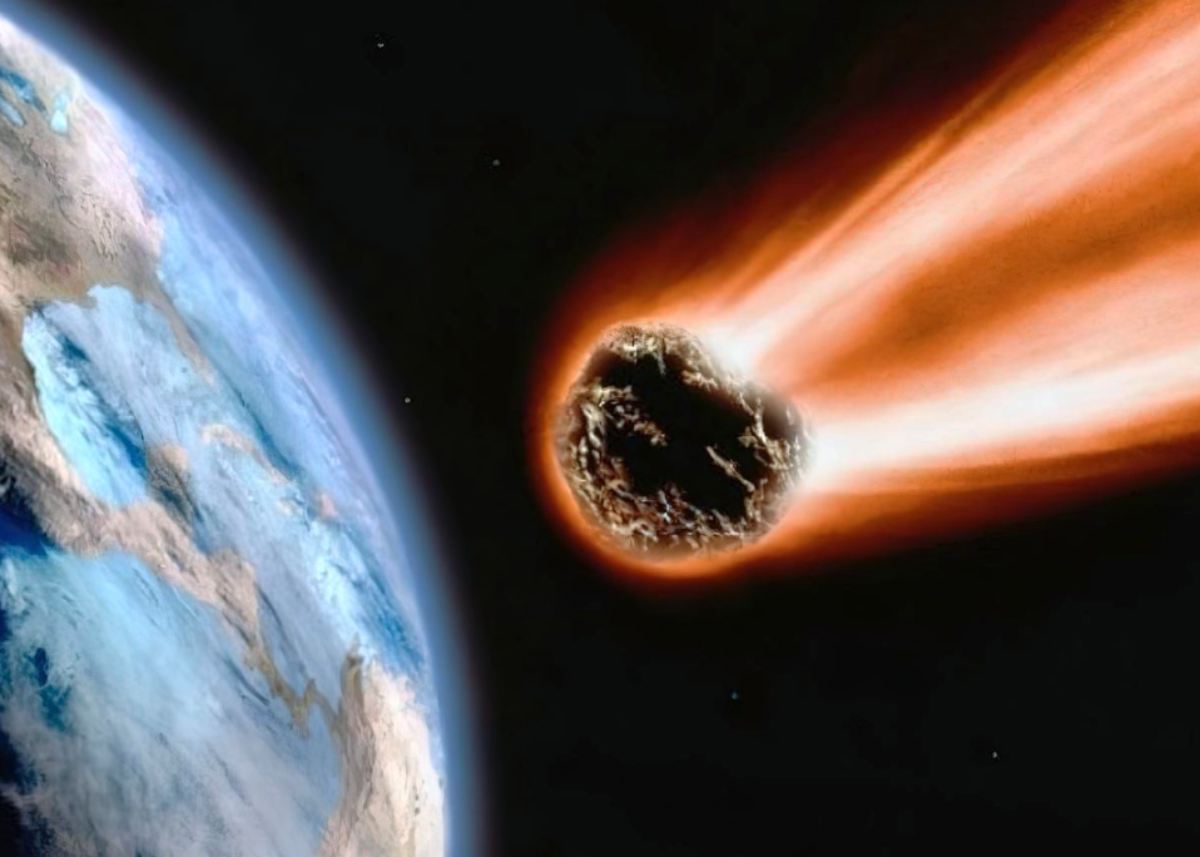
The Yucatán Peninsula in Mexico was hit by an asteroid 66 million years ago, when Earth was teeming with dinosaurs. The extinction of the dinosaurs and 75% of all other life on Earth can be directly attributed to the collision of this object.
However, in February 2021, two academics released a paper in the journal Scientific Report that offered a new idea to explain the phenomenon. They hypothesized that the object that struck Earth was a piece of a comet that had gotten too close to the Sun and been torn apart by the Sun’s gravity. This impact would have resulted in the formation of the well-known Chicxulub crater and a tsunami, both of which proved to be disastrous for a wide variety of living forms.
When did Halley’s Comet last appear?
Halley’s Comet is without a doubt the most well-known comet in history. Even before it was formally discovered in 1758, this comet had been seen multiple times. The watchers had thought they were seeing a new comet each time.
Many years after this date, in 1835, 1910, and 1986, this comet made fresh crossings that were more or less impressive. Every 76 years, to be precise, and the next one won’t happen until 2061.
Where is Comet Leonard?
Greg J. Leonard, an astronomer, and geologist who discovered comet Leonard in January 2021 and gave it its name, predicted that on January 3, 2022, the comet will come very near to Earth, resulting in a sequence of extraordinary photographs. After that, the comet started to leave our planet and go back to the solar system’s outskirts. It began to dissolve in February 2022, when its nucleus and hair began to fall out.
When did comet Neowise last pass earth
In July 2020, astronomy fans everywhere were giddy about Comet Neowise, also known as C/2020 F3. Many pictures, like the one NASA released, have been inspired by its arrival. The Parker Solar Probe captured the image of the comet, which shows off its distinctive “hair” and “double tail.”
The comet, which had been photographed from every conceivable direction by astronomers all around the globe, has now returned to the Oort cloud. There is a true reservoir of comets in this enormous cloud of tiny ice particles located after Neptune. If Neowise has piqued your interest, you won’t be able to get a glimpse of it for another 6,800 years.
How large is comet 67P?
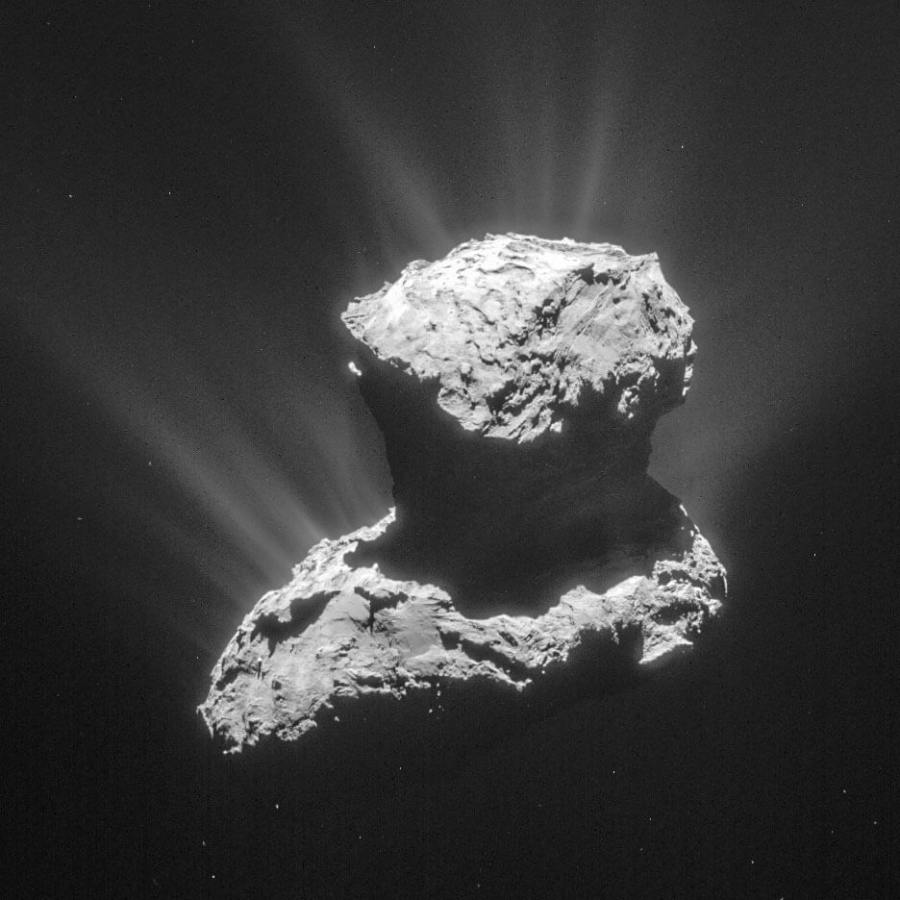
Comet 67P/Churyumov-Gerasimenko was discovered near Kiev, Ukraine in 1969. This interestingly shaped comet is around 2.5 miles (four kilometers) in length. However, despite its massive size, it is capable of floating. Its density is comparable to that of cork. The comet’s overall form is remodeled when the ice that makes up its surface is sublimated during its many close approaches to the Sun. According to scientists, there are cliffs, plains, and faults to be discovered.
Comet 67P has been explored in great detail by scientists because of the Rosetta probe and its robotic Philae. Following a trip lasting more than a decade aboard the Rosetta probe, the latter finally touched down on the comet’s surface in November of 2014 after traveling 4 billion miles (6.4 billion kilometers) through the Solar System.
The Philae robot, which was equipped with a soil drilling instrument and many pieces of equipment to study the samples it obtained, communicated with Rosetta and relayed crucial data on the comet’s composition until the end of contact in July 2015. In November of 2021, 67P came back to see us again before relocating “permanently”. Since it is unlikely to travel this way again until 2214, it will have a very long voyage ahead of it.
The best way to see a comet in the night sky
The comet’s brightness will determine whether or not it can be seen with the naked eye. This happened in July of 2020 with the very brilliant comet Neowise. To fully appreciate the event, though, astronomical binoculars or a telescope are a must.
When a comet is visible to the human eye, it can be captured on film using just a basic camera and some manual controls. Exposures of 20 seconds or longer at ISO 1600 (minimum 800) need to be used, along with a wide-angle lens. It’s best to reduce the ISO if light pollution is significant.
You may play with the composition by putting the comet in a unique place, such as high in the sky, over a tree, or in a valley between two mountains. To avoid fuzzy photos while taking them without a tripod, try setting the timer on your camera instead.


